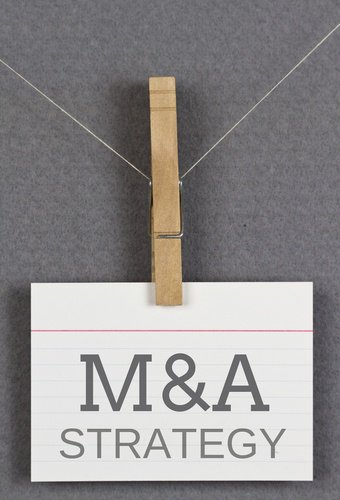
Mergers and acquisitions have long been a popular growth strategy for companies seeking to expand into new markets or territories, gain a competitive edge, or acquire new technologies and competencies. Yet when it comes to increasing shareholder value, M&As have historically achieved mixed business results at best. While many factors contribute to determining whether a merger makes sense and will ultimately achieve desired financial results, brands are often a crucial incoming consideration and a determinant of ultimate post-M&A business performance.
A solid portfolio and brand architecture strategy can significantly improve the odds of M&A success and strategic growth. The better defined the strategy, the more likely a company will be to keep brand top of mind during the deal, value an acquisition appropriately, and have an effective plan in place to leverage the new brand assets.
This post is the first in a three-part series addressing the role of brand portfolio strategy and architecture within M&A. This post addresses the critical function of the Corporate Brand in M&A efforts. Subsequent posts will look at:
- The role of brand post-M&A at the product/service level
- How to effectively transition brands following mergers to mitigate risk
Executing a Brand Portfolio Strategy After a Merger or Acquisition
The decision on what brand name should represent the merged entity sends definitive signals internally and to the outside world. It's often one of the earliest and most emotionally-charged decisions that must be made. It can affect issues as diverse as the name customers will identify with on product packaging or when visiting corporate headquarters, the ticker symbol that potential investors will see when making investment decisions, and the name on business cards for thousands of employees who may closely identify with their legacy brand name.
When companies merge, brand strategy consulting experts describe several choices that leadership must make about the combined brand portfolio, and in particular, the corporate brand name chosen. Common options include:
- The acquired brand merges into the parent brand. When Marriott International recently acquired Starwood Hotels and Resorts, only the product (hotel property and loyalty program) brands were retained
- The two legacy brandscan continue to exist in their own right. The AOL and Huffington Post brands were both retained following the acquisition, in which the latter became a subsidiary of the former
- The two brand names can be merged into one—much like the companies. FedEx-Kinkos and ExxonMobil are two such examples. This can be part of a temporary strategy (FedEx-Kinkos eventually became FedEx Office), or a permanent strategy (as was the case for ExxonMobil)
- An entirely new brand name can be created. Verizon was the new brand name chose for the combined entities of Bell Atlantic and GTE
The Post-Merger Corporate Brand
With all that’s at stake, and several viable options from which to choose, how should this decision be made? When does one of the above alternatives seem to make more sense than the others? While there is no simple answer or formula to follow, the following are some key considerations when making the all-important post-M&A corporate branding decision:
Respective brand strength. This is essentially the market perspective, and therefore in most cases, it should be the prevailing consideration. To what extent are the two brands (and their respective offerings) complementary vs. redundant? Does one brand have greater awareness or better elasticity/stretch among key customer segments? Does one of the brands have particularly strong positive equities and associations that need to be maintained? Conversely, does one brand risk confusing or even alienating certain customers or markets?
Financial and operational implications. The branding strategies listed above come with differing levels and types of challenges. While some cost and complexity are inevitable with any of the name directions, what is the merged entity’s appetite for investing behind brand(s) in the new reality? Creating a new-to-the-world brand carries with it significant cost and risk. Lengthy transitional strategies can be operationally challenging, in addition to expensive and confusing to the market.
Employee buy-in and cultural integration. Choosing one brand over the other implies—rightly or wrongly—a winner and loser in the merger. Many employees strongly identify with their company brand and feel apprehensive when they start to think about what it means for the business—and for them personally—to suddenly have a different corporate identity. While this rarely should be the primary decision factor, it is an important consideration. Regardless, carefully crafted and well-executed internal communications—and the infrastructure to support the brand—are critical first steps.
Designing the future of a merged brand portfolio requires an understanding of the customer base, competitive landscape, and company priorities. Prioritizing the corporate brand strategy is the first of countless factors that must be considered in the branding of a merger or acquisition. Part 2 of this series will address the branding of the products and services that operate underneath the corporate banner.
Recent Posts
Posts by Topics
- Brand Strategy (57)
- Brand Strategy Consulting (28)
- Brand Differentiation (27)
- Customer Experience (24)
- Brand Positioning (22)
- Marketing Strategy (9)
- Brand Extension Strategy (8)
- Customer Behavior (8)
- Brand Architecture Strategy (7)
- Brand Extension (7)
- Brand Growth (7)
- Brand Portfolio & Architecture (7)
- Brand Purpose (7)
- Brand Value Proposition (7)
- Brand Engagement (6)
- Brand Portfolio Strategy (6)
- Brand Storytelling (6)
- Rebranding Strategy (6)
- Brand Awareness (5)
- Brand Image (5)
- Branding (5)
- Rebranding (5)
- Technology (5)
- B2B Brand Strategy (4)
- Brand Experience (4)
- Value Proposition (4)
- Brand Extendibility (3)
- Brand Metrics (3)
- Brand Repositioning (3)
- Corporate Branding (3)
- Differentiation Strategy (3)
- Measurement & Metrics (3)
- Brand Engagement Strategy (2)
- Brand Portfolio (2)
- Brand Promise (2)
- Brand Voice (2)
- Digital Marketing (2)
- Digital and Brand Experience (2)
- Employee Brand Engagement (2)
- Brand Architecture (1)
- Brand Development (1)
- Brand Equity (1)
- Brand Identity (1)
- Brand Measurement (1)
- Brand Name (1)
- Brand Strategy Consultants (1)
- Brand Strategy Firms (1)
- Digital Strategy (1)
- Internal Branding (1)
- Messaging (1)


